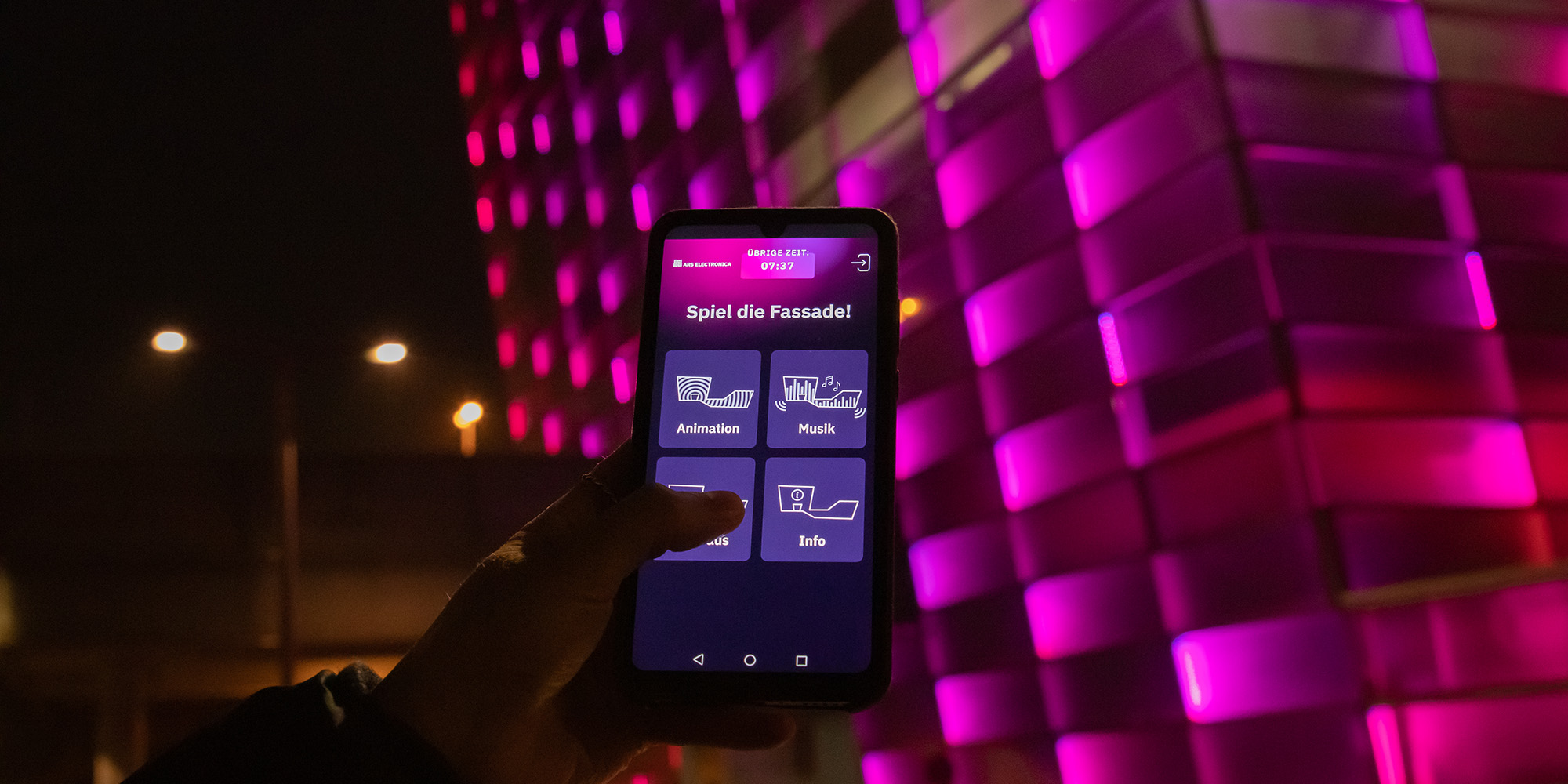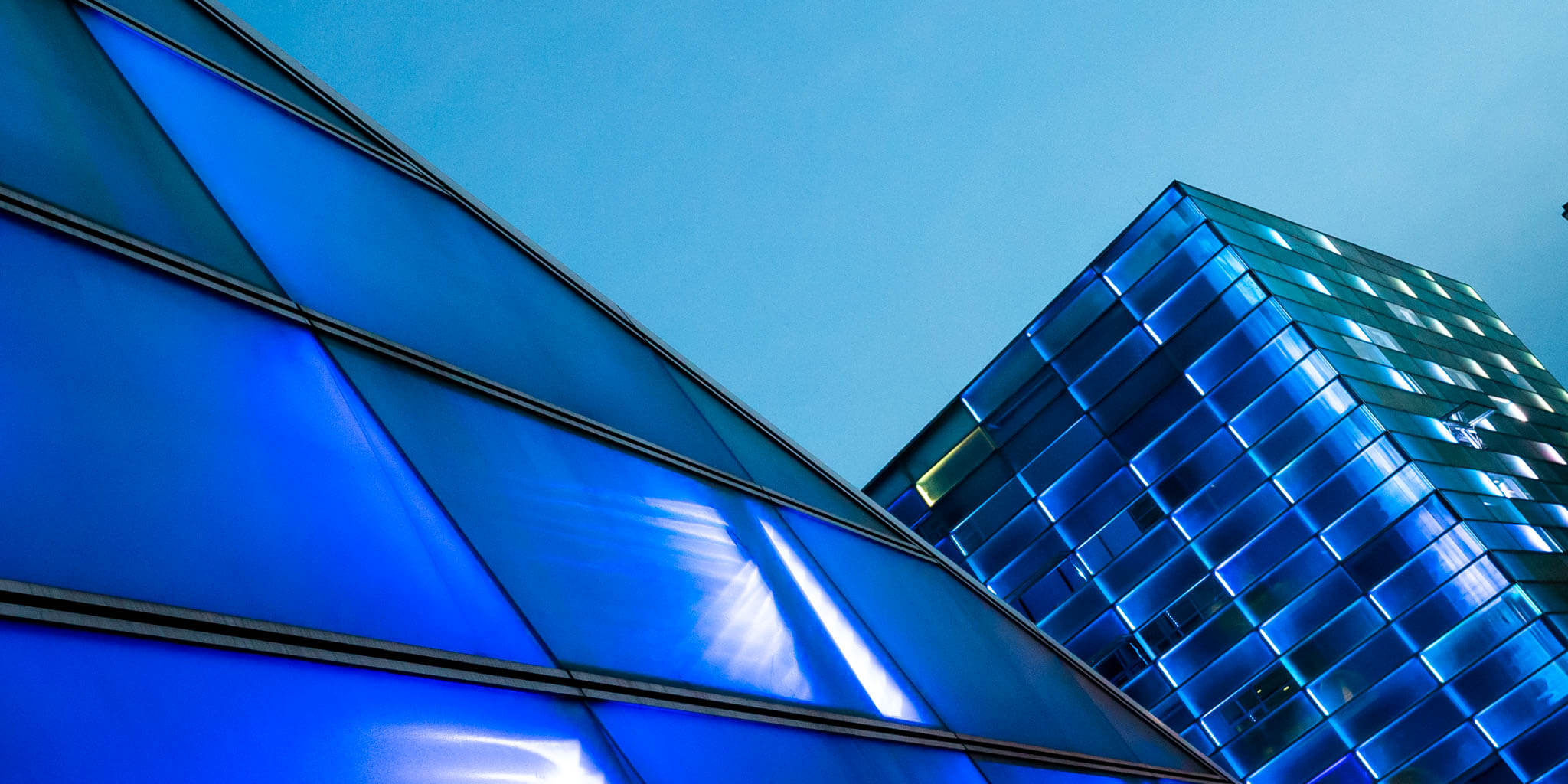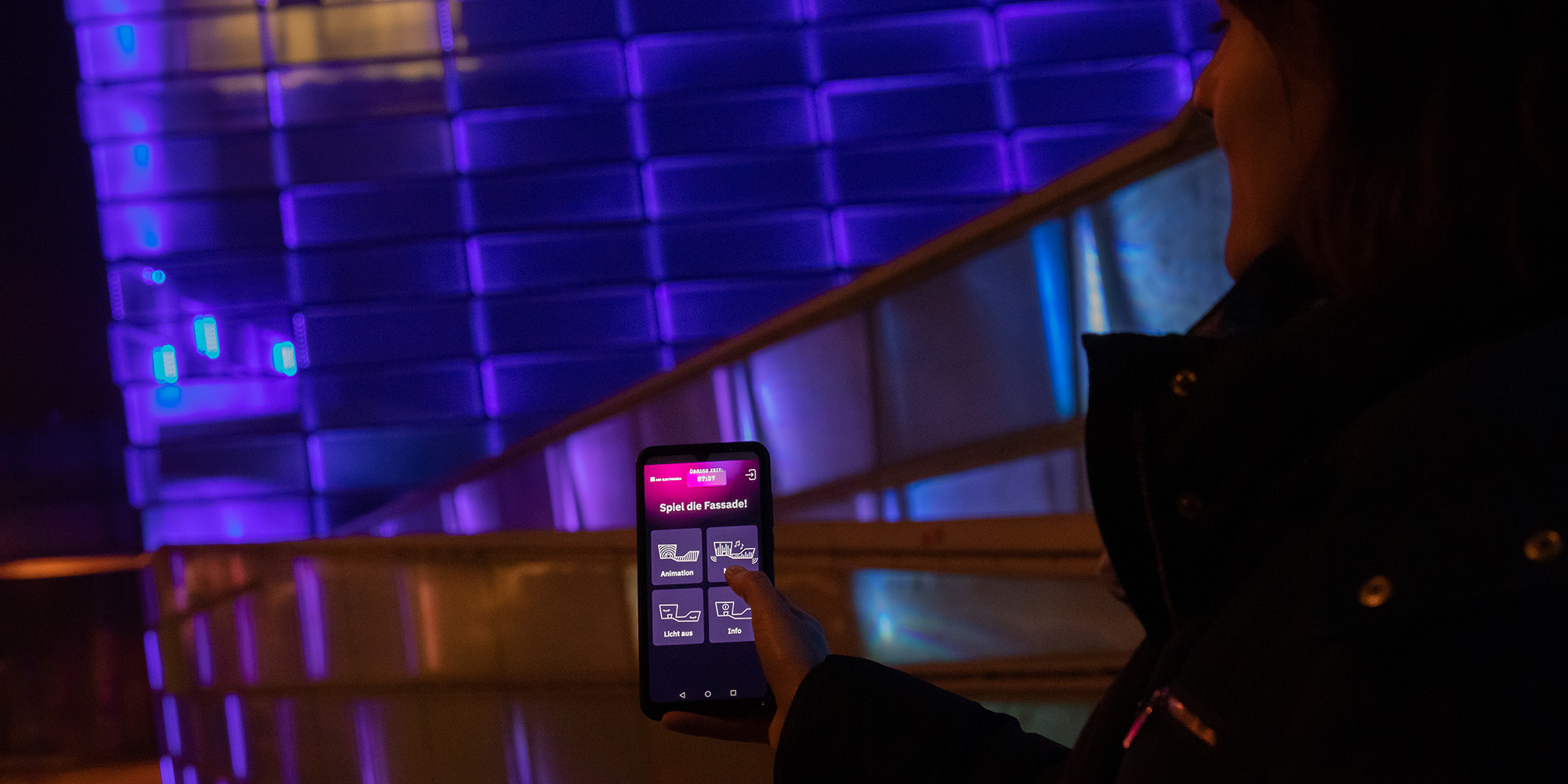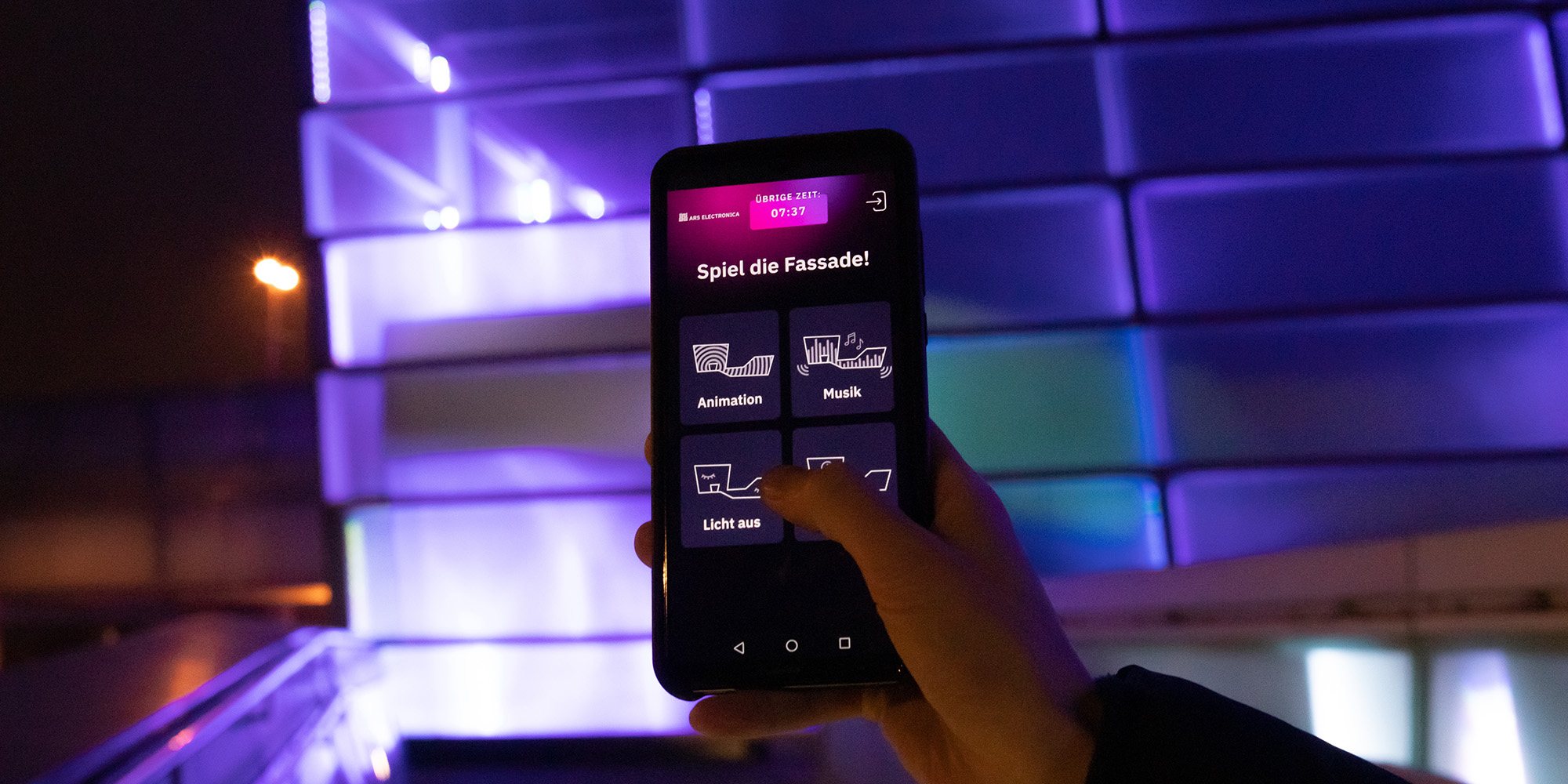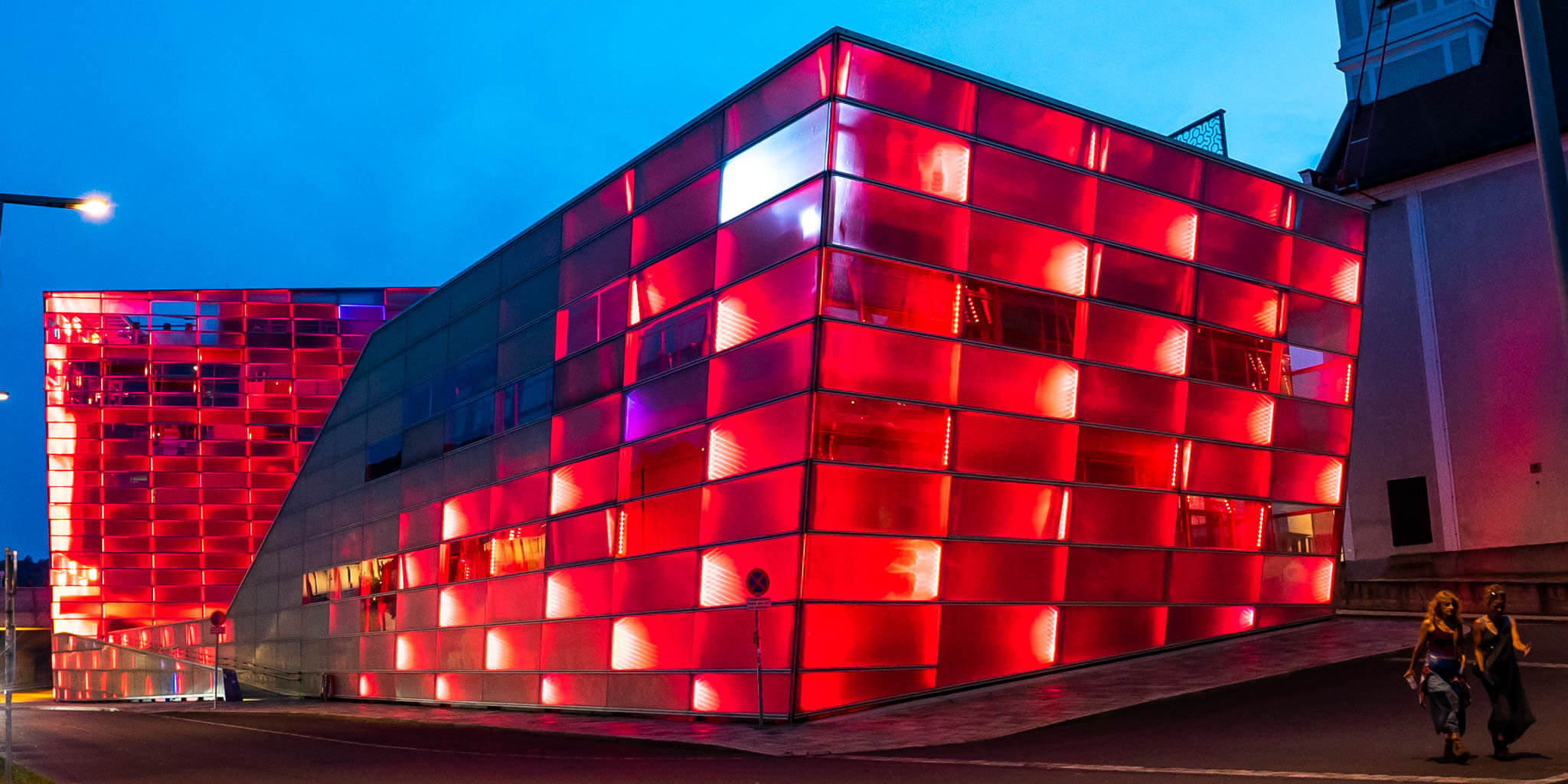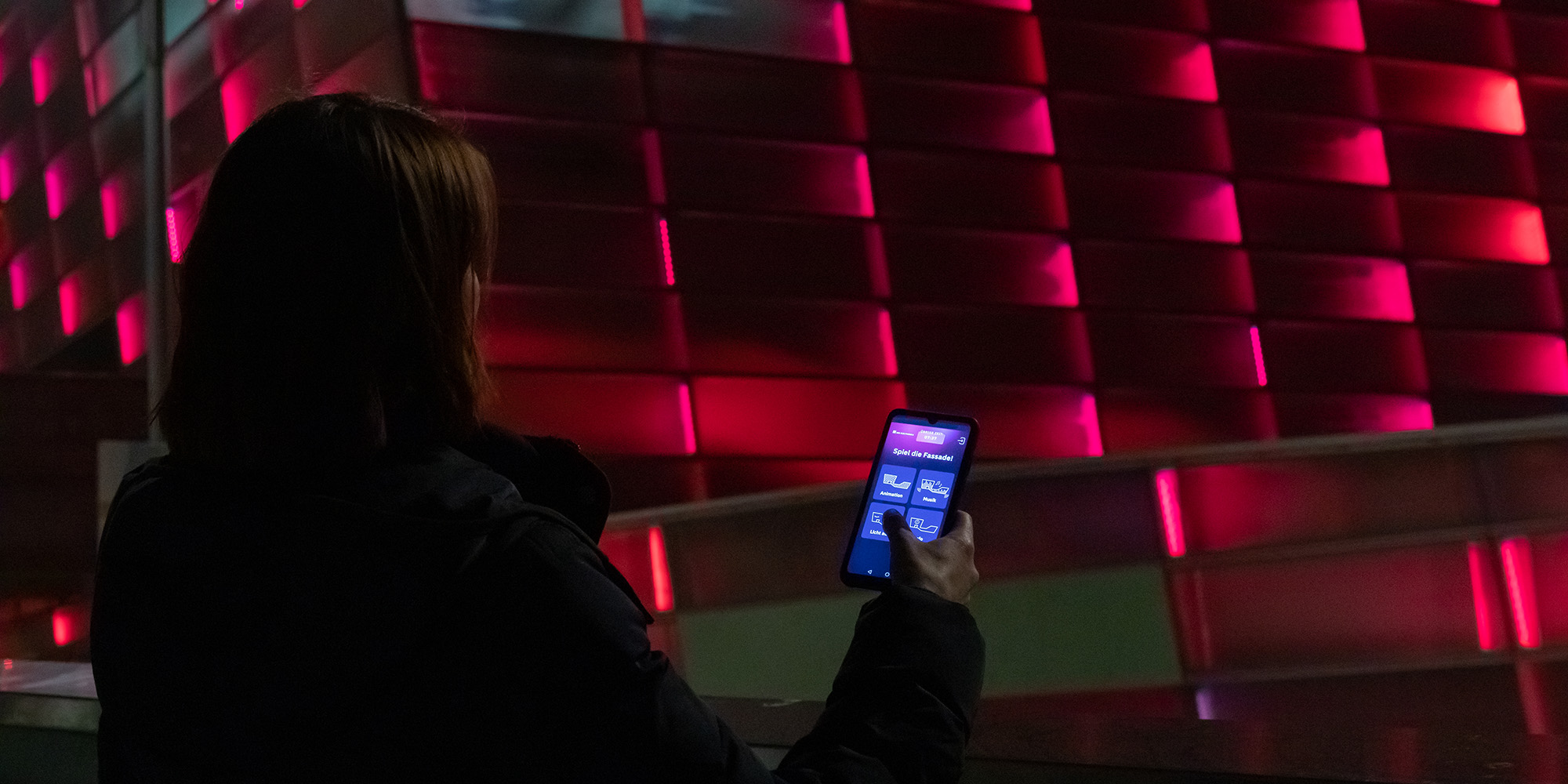The façade of the Ars Electronica Center, with its 38,500 LEDs, has been shaping the cityscape of Linz since 2009. Just one year later, the public was able to take control of the illuminated museum exterior for the first time via the façade terminal. This was followed in 2022 by the new edition – with Play the Façade and a website full of fresh creative possibilities.
The outworn interaction terminal was completely redesigned for Play the Façade: Instead of a display in the public space, it now contains an explanation and a QR code for the new Play the Façade web app because the developers shifted the control to the users’ smartphones. The 38,500 LEDs of the Ars Electronica Center can be controlled – or completely switched off – via a wifi connection to the building. Current information and opening hours for Play the Façade can be found here.
A new interface was created for the web app to send commands directly to the façade control system. The website allows only one person at a time to take over control for ten minutes. The terminal next to the Danube uses indirect colored lighting to indicate whether a time slot is currently available, and is thus once again the center of Play the Façade as an information point. This is also where the Bluetooth connection is established that can be used to play sound over the facade. If you only want to control animations of the facade, you can also take control on the maindeck via several wifi access points.
From terminal to game
In 2010, the “sprucing up” of the Linz landmark with 38,500 LEDs became something bigger and more innovative: The Ars Electronica Futurelab transformed the static museum shell into a designable medium for the public. After a prolonged hiatus, it was time for a remake a decade later: at the end of 2022, the Futurelab team presented the redesigned Play the Façade (Fassadenspiel), which was released to the public in spring 2023 after a test phase.
In the first version of the façade terminal in 2010, users took control of the Ars Electronica Center’s façade directly via the touch-screen terminal. Various applications were available, such as a pulse interface that used a pulse sensor to transmit the user’s heart rate to the building – with the option of changing colors and pulse patterns. In addition, the user’s pictures and videos could be transferred from a cell phone or MP3 player to the building, or the integrated camera could be used for direct interaction. The third function was an audio interface with which any music could be played via the system in the facade – here, too, the visuals could be designed by the users themselves and in real time.
Credits
Ars Electronica Futurelab: Friedrich Bachinger, Manuel Dobusch, Stephan Feichter, Roland Haring, Peter Holzkorn, Susanne Kiesenhofer, Stefan Mittlböck-Jungwirth-Fohringer
Ars Electronica Center: Florian Wanninger
